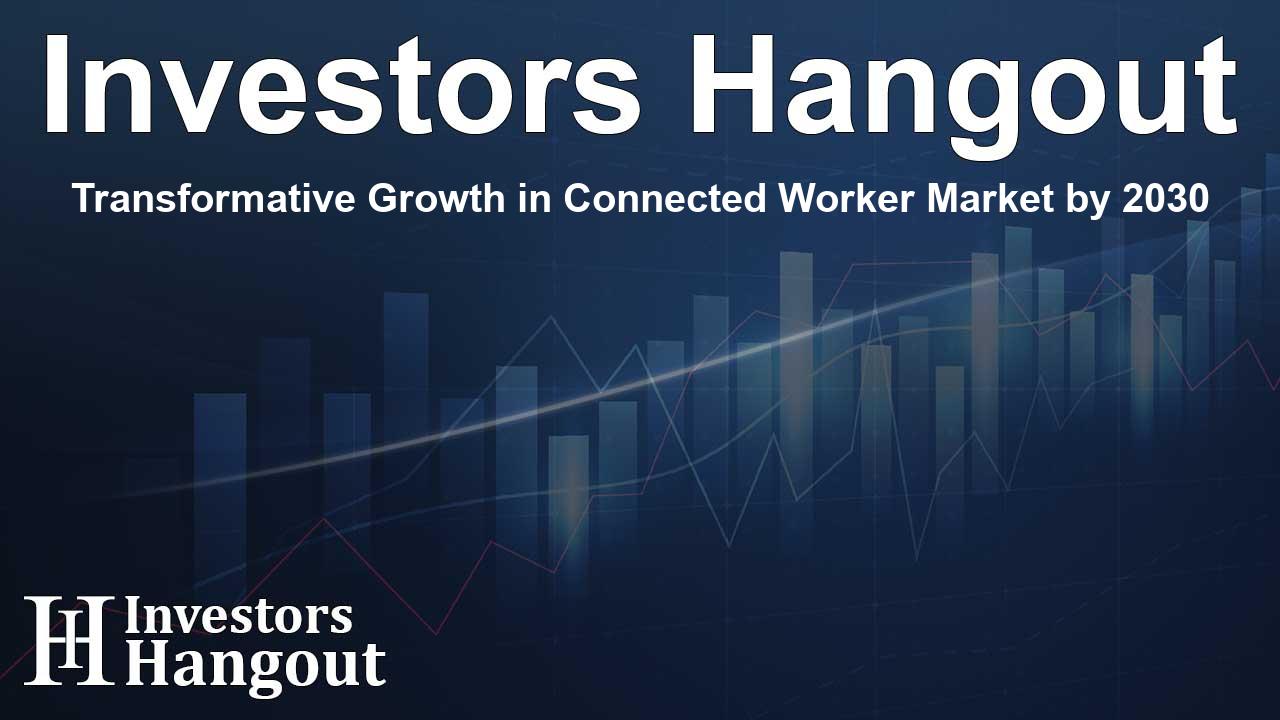Transformative Growth in Connected Worker Market by 2030

Overview of the Connected Worker Market
The global connected worker market is on the verge of significant expansion, anticipated to reach USD 20.18 billion by the end of the decade. The market is projected to grow from an estimated USD 8.62 billion in 2025, with a robust CAGR of 18.5% during this period. This impressive growth is largely attributed to the increasing support from government regulations aimed at enhancing safety in various working environments.
Importance of Government Regulation
Governments have been steadily increasing the enforcement of safety laws and placement of standards that require companies to implement real-time monitoring for worker safety. This shift in regulations mandates the use of advanced technologies that help companies keep detailed digital records and ensure that their equipment is safe and compliant. Connected worker platforms are vital in helping businesses achieve these goals, offering tools that enable continuous monitoring through devices such as IoT sensors and wearable technology.
How Connected Worker Platforms Improve Safety
These platforms empower organizations to detect unsafe working conditions instantaneously, offering rapid alerts to employers while streamlining reporting workflows for incidents and audits. By enhancing communication and data management, they not only foster a safer environment but also improve overall productivity among the workforce.
Technology Driving Change in Connected Worker Market
The technology underpinning the connected worker market is evolving, with wearable devices leading the charge in this transformation. These devices integrate sophisticated sensor technology and ergonomic designs, enhancing both safety and productivity for employees in high-risk sectors. Leading suppliers like RealWear and Microsoft HoloLens are producing smart glasses that provide users with immediate access to technical manuals and expert guidance without needing to pause work. This innovation supports industries such as energy, construction, and manufacturing.
The Role of 5G in Shaping the Future
One of the major trends set to impact the connected worker market in the coming years is the rollout of 5G networks. This new technology delivers rapid data transfer and very low latency, making it ideal for applications requiring real-time video support and remote monitoring. Companies like Ericsson and Nokia are actively deploying private 5G networks to facilitate smart factories, enhancing operational capabilities for many industrial users.
Regional Insights and Growth Potential
Regionally, the Asia Pacific area is expected to exhibit the highest growth rate in the connected worker sector. The rapid industrialization and digital transformation occurring in countries like India and China are fueling this expansion. There's a notable emphasis on integrating AI, augmented reality, and IoT wearable technology in sectors such as healthcare, manufacturing, and construction, which are critical for driving productivity.
Innovation in Asia Pacific
In construction, IoT wearables are being utilized to monitor working conditions, ensuring the safety of workers in dynamic environments. Moreover, augmented reality training is enhancing the skill sets of workers, which is exemplified in many factories across South Korea.
Leading Companies in the Connected Worker Market
Several key players are leading the charge in the connected worker market. Prominent companies include Honeywell International, Microsoft, and Siemens, among others. These organizations are at the forefront of pioneering technology solutions that cater to the demands of modern industries.
Future Market Trends
As market dynamics shift, the connected worker segment is expected to explore opportunities in next-generation bio-sensing wearables. These advancements promise to enhance the reliability and capability of devices used in demanding environments, making them a critical area of investment.
Frequently Asked Questions
What factors are driving the growth of the connected worker market?
The growth is largely driven by increased government regulations aimed at ensuring worker safety and the rapid adoption of advanced technologies to monitor working conditions effectively.
What role do wearable devices play in this market?
Wearable devices improve worker safety and productivity by offering real-time data collection, alerts for unsafe conditions, and ergonomic solutions for frontline employees.
How does 5G technology influence the connected worker market?
5G technology supports high-speed data transfer and low latency, making it well-suited for critical applications such as remote monitoring and video support in industrial settings.
Which regions are seeing the most growth in the connected worker market?
The Asia Pacific region is predicted to witness the fastest growth due to rapid digitalization in industries such as construction, healthcare, and manufacturing.
Who are the leading players in the connected worker technology space?
Key players include Honeywell International, Microsoft, Siemens, Schneider Electric, and PTC, which are instrumental in driving innovation in this market.
About The Author
Contact Thomas Cooper privately here. Or send an email with ATTN: Thomas Cooper as the subject to contact@investorshangout.com.
About Investors Hangout
Investors Hangout is a leading online stock forum for financial discussion and learning, offering a wide range of free tools and resources. It draws in traders of all levels, who exchange market knowledge, investigate trading tactics, and keep an eye on industry developments in real time. Featuring financial articles, stock message boards, quotes, charts, company profiles, and live news updates. Through cooperative learning and a wealth of informational resources, it helps users from novices creating their first portfolios to experts honing their techniques. Join Investors Hangout today: https://investorshangout.com/
The content of this article is based on factual, publicly available information and does not represent legal, financial, or investment advice. Investors Hangout does not offer financial advice, and the author is not a licensed financial advisor. Consult a qualified advisor before making any financial or investment decisions based on this article. This article should not be considered advice to purchase, sell, or hold any securities or other investments. If any of the material provided here is inaccurate, please contact us for corrections.
